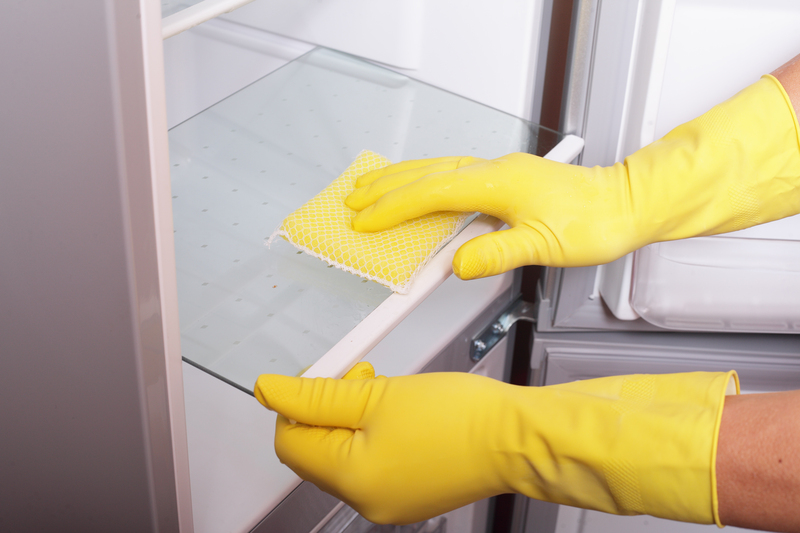Best Practices for Hard Floor Maintenance
Posted on 08/04/2025
Maintaining the aesthetics and longevity of hard flooring requires a comprehensive understanding of best practices. Hard floors, whether made of wood, tile, laminate, or vinyl, are a significant investment. Proper care not only enhances their appearance but also extends their lifespan. This article explores some essential tips and techniques for maintaining hard floors effectively.
Types of Hard Flooring
Understanding the specific type of hard floor you have is crucial for proper maintenance. Here are the most common types:
- Wood Flooring: Elegant and classic, but sensitive to moisture and scratches.
- Tile Flooring: Durable and water-resistant, perfect for high-traffic areas.
- Laminate Flooring: Offers the look of wood or stone with easier maintenance.
- Vinyl Flooring: Highly versatile, water-resistant, and budget-friendly.

Daily Maintenance
Daily cleaning is essential to maintain the luster and cleanliness of hard floors. Here are some best practices:
1. Sweeping and Vacuuming: Use a soft-bristle broom or a vacuum with a suitable floor setting to remove dust and dirt.
2. Mopping: Damp mop with a cleaner appropriate for your specific flooring type. Avoid using excessive water, especially on wood and laminate floors to prevent warping.
3. Spot Cleaning: Address spills and stains immediately with a soft cloth and appropriate cleaner to prevent lasting damage.
Weekly and Monthly Care
In addition to daily care, perform more thorough cleaning on a weekly and monthly basis:
1. Detailed Mopping: Use a dedicated cleaner for your floor type and mop more thoroughly. Pay extra attention to high-traffic areas.
2. Polishing and Buffing: Wood and laminate floors may benefit from occasional polishing to restore shine. Buffing also helps to reduce scratches and scuffs.
Seasonal Maintenance
Seasonal changes can affect your flooring, particularly wood, which expands and contracts with humidity levels:
1. Humidity Control: Use humidifiers in winter and dehumidifiers in summer to keep indoor humidity levels stable, minimizing wood floor movement.
2. Deep Cleaning: Perform deep cleaning sessions with professional-grade cleaners or consider professional services to remove ingrained dirt.
Preventative Measures
Prevention is often easier than repair. Implement these measures to protect your floors:
1. Furniture Pads: Place felt pads on the bottoms of furniture legs to prevent scratching.
2. Doormats and Rugs: Use doormats to catch dirt before it enters your home. Rugs in high-traffic areas can also protect the flooring.
3. Footwear Policy: Encourage family and guests to remove shoes upon entering to prevent grime transfer.
Pros and Cons of Hard Floor Maintenance
Efficient floor maintenance has its advantages and challenges:
Pros:
- Enhanced Appearance: Regular maintenance keeps floors looking new.
- Extended Lifespan: Proper care prevents damage and prolongs floor life.
- Value Preservation: Maintained floors contribute to home value.
Cons:
- Time-Consuming: Regular cleaning and preventative measures require consistent effort.
- Cost: Quality cleaning products and occasional professional services can add up.
- Sensitivity: Different floors have specific needs, and using the wrong products can cause damage.
Top Maintenance Tips
- Follow Manufacturer Guidelines: Always refer to the floor manufacturer's maintenance recommendations.
- Avoid Harsh Chemicals: Use pH-neutral cleaners suitable for your floor type.
- Regular Monitoring: Inspect your floors regularly to catch and address minor issues before they escalate.
- Protect from Sunlight: UV rays can discolor some floor types. Use blinds or curtains during peak sunlight hours.

Key Takeaways
- Regular sweeping, mopping, and spot cleaning are essential.
- Understand and cater to the specific needs of your floor type.
- Preventative measures can save time and money in the long run.
- Seasonal maintenance and controlling humidity levels are crucial for wood floors.
- Professional help may occasionally be necessary for deep cleaning and repairs.
Conclusion
Maintaining hard floors involves a combination of regular cleaning, preventative measures, and periodic professional care. By understanding your specific floor type and following these best practices, you can keep your floors looking pristine and ensure their longevity. Regular maintenance not only preserves the beauty and functionality of your flooring but also protects your investment.
Maintaining hard floors doesn't have to be overwhelming. With a structured approach and the right practices, your floors can remain a stunning feature in your home for years to come.







